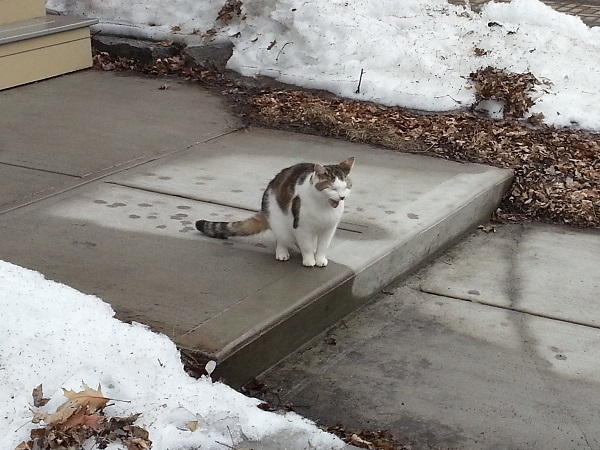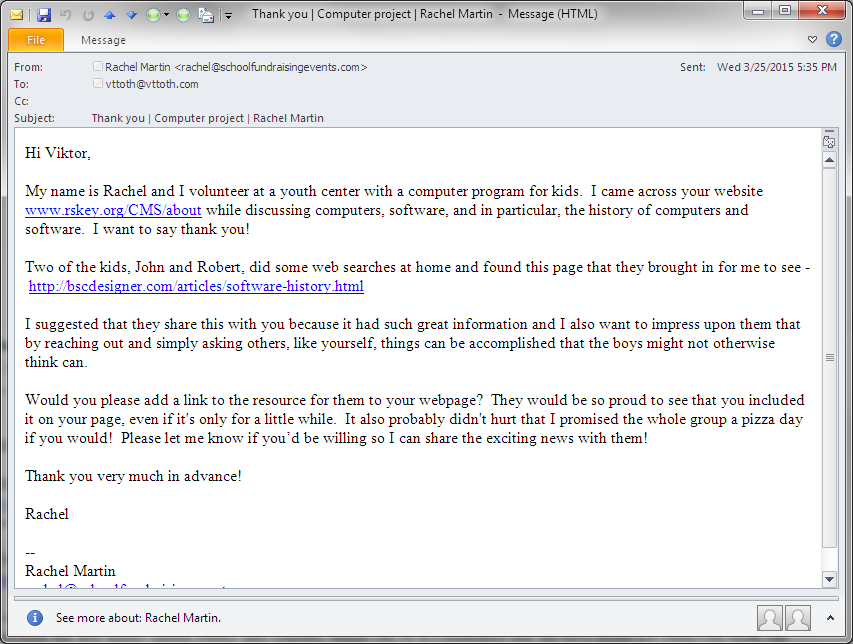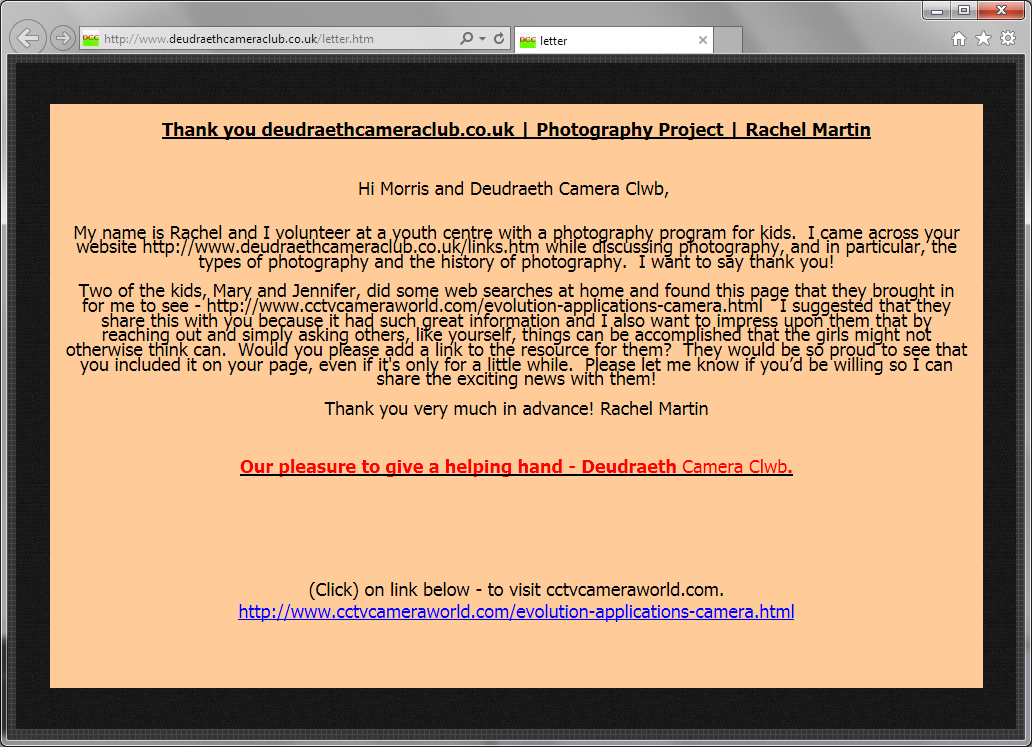I am listening again to this amazing recording of Gustavo Dudamel and the Simón Bolívar Symphony Orchestra performing Danzón No. 2, by Mexican composer Arturo Márquez.
I enjoy this performance so much, I get goosebumps.
I am listening again to this amazing recording of Gustavo Dudamel and the Simón Bolívar Symphony Orchestra performing Danzón No. 2, by Mexican composer Arturo Márquez.
I enjoy this performance so much, I get goosebumps.
Alas, Poppy, the 20th century cat, is dead.
We just learned that this beautiful little cat, who stayed with us for a few weeks several times in the past 15 years when her owner was out of town, is gone. She was not young; her exact age was unknown, but she was at least a couple of years old when she was adopted back in 2001. So she was definitely a 20th century cat. While some cats do live 20 years (in rare cases, even 30 years) or more, the average age of a house cat is more like 15 years or so, therefore it is not surprising that it was Poppy’s turn. But sad nonetheless.
Especially sad today, as I learned only a few hours ago that a beloved relative, aunt Éva, wife of my late uncle Jóska, passed away just yesterday, after a brief illness.
Here is the last picture of Poppy that I took, less than nine months ago when she was in our house for the very last time:

Poppy was one of the most beautiful cats I’ve ever known: tiny, with an asymmetric color pattern dividing her face. It always took a day or two for her to acclimatize (I learned always to release her upstairs, where she felt less trapped) but afterwards, she was friendly, gentle, and got along very well with our own cats, too.
Poppy’s owner used to use a cardboard carrier to transport her. This is what the carrier looked like over 10 years ago:

In the past ten years, I often repaired this carrier using packing tape and even duct tape. Somehow, it managed to hold together. We were wondering if the carrier would outlast the cat. Now we know.
It looks like this is a depressing week of final good-byes in my blog.
I just learned that aunt Éva, wife of my late uncle Jóska, passed away after a brief illness. She was 72.
Aunt Éva was a very private person. I was sure that I had a picture of her somewhere, but I cannot find it anywhere. Perhaps it’s never been digitized? I don’t know.
I last met aunt Éva two years ago, when I was in Budapest for a family visit. We threw a little party at my Mom’s small apartment, and I was delighted when aunt Éva honored us by dropping by briefly. This was a big deal, as she usually avoided such events. I was very grateful that she made an exception to the rule on this one occasion.
I remember her very well, her black hair, her features, her voice. Along with my uncle Jóska, they always treated me like one of their own three children whenever we visited them. I miss both of them.
I just learned the tragic news: Less than 24 hours after I uploaded my previous post about the one-time CBC radio program Disc Drive, the program’s former host, Jürgen Gothe, passed away, after a long battle with cancer.
I am deeply saddened. I secretly hoped that one of these days, we will hear him yet one more time on the radio. But that’s not going to happen… his wonderful voice has been silenced forever.
Jürgen was 71.
What a loss.
I am listening to The Disc Drive Disc.
The Disc Drive Disc is an audio CD. More specifically, it is an audio CD that was released by the CBC 24 years ago, shortly after the fifth anniversary of my all-time favorite radio program, Disc Drive.
Disc Drive went on for another 17 years or so, until it was unceremoniously dropped from the CBC’s schedule as Radio Two was revamped to cater to a broader audience. I am sure that executives at the CBC are still congratulating each other on such a resounding success, even as the station lost nearly 40% of its audience in the past eight years, in their desperate search for the lowest common denominator, an audience that views “classical” as just a minor, unpopular genre.
And most unfortunately, they lost host Jurgen Gothe and Disc Drive: a unique, eclectic program in which it was not uncommon to hear something from Mozart, followed by Ella Fitzgerald. As Jurgen himself put it on The Disc Drive Disc, this program was unique in the English-speaking (or anything-speaking) world. And Jurgen’s whimsical commentary! It was a joy to listen to his stories about music, food, Herbie the cat or the Willis Point Fire Department. I was looking forward every weekday afternoon to 3 PM, when I could turn on my radio and enjoy a productive few hours at my computer while listening to the program.
Alas, this wonderful, unique, joyful program was taken off the air in 2007. If only I had the presence of mind, I would have recorded as many shows as possible. I didn’t. I did record the very last Disc Drive, which was mainly a replay of the very first Disc Drive, but that’s it.
Except that back in 1991, the CBC did issue the aforementioned CD, The Disc Drive Disc. Of course it is not an easy disc to come by 24 years later. When I searched for it online, second-hand copies were offered for hundreds of dollars on Amazon or eBay. But then, I came across a German music store that claimed to have this CD, still available, for the not so princely sum of 9.99 euros.
I picked, I clicked, and a few weeks later, today that is, I found a nice cardboard envelope in the mail, with The Disc Drive Disc inside. So one very last time, I was able to enjoy something new (to me, that is) from Jurgen Gothe and his team (and cats) from subterranean Studio 20.
Thank you, Jurgen, for the memories.
Last evening, I decided to update my rooted Samsung Galaxy S3 smartphone.
I did not expect to stay awake for much of the night, struggling to revive a “bricked” phone.
In the end, though, all is well: my phone is alive and once again, for the first time since the 4.3 update, it is both rooted and encrypted.
Social networking sites know a lot about you, and LinkedIn is no exception.
The other day, I noticed a cute tool (for all I know, it was around for years; I don’t visit LinkedIn that often) that graphically summarizes my LinkedIn connections. Here it is:
 I was a bit surprised by the number of connections I seem to have from the San Francisco Bay area. I am also wondering about the correct interpretation of the Seniority plot. If you have a lot of senior connections, is it because of your own seniority, or is it because these were all your would-be bosses, but you were never able to find a good position and form good relationships with co-workers?
I was a bit surprised by the number of connections I seem to have from the San Francisco Bay area. I am also wondering about the correct interpretation of the Seniority plot. If you have a lot of senior connections, is it because of your own seniority, or is it because these were all your would-be bosses, but you were never able to find a good position and form good relationships with co-workers?
Then again, as far as I can determine, others may not even be able to view this graphic. That is, unless you are silly enough to post it to your blog for the world to see! Oh… what?!
There is this famous quote attributed to Winston Churchill: “You can always count on Americans to do the right thing – after they’ve tried everything else.”
I was reminded of this quote on Sunday, while I watched Fareed Zakaria on CNN discussing the situation in the Middle East.
However, I also feel compelled to add another sentence to the famous quote: “Meanwhile, you realize that they’ve known clearly what the right thing was all along.” Even George W. Bush, presumed to be intellectually challenged by his detractors.

After all, if George W. Bush of all people had such clarity concerning the Middle East, why is the United States of America still meddling and still supporting despotic regimes?
Along with, I am afraid to say, Canada. Our warmongering prime minister just managed to get authorization from Parliament to extend Canada’s anti-ISIS mission to Syria. But who exactly are we fight for there? Syria’s murderous secular dictator? Or Iran’s murderous Shiite proxies? And why is this Canada’s fight anyway?
I was quite doubtful about the theory that Germanwings 9525 was brought down intentionally by its co-pilot. I was more inclined to bet on a health problem. Perhaps I could argue that in a sense, I was right: mental illness can be just as debilitating as any physical condition. And a person suffering from severe mental illness can be quite capable of doing unspeakable, irrational things, whether it is due to “voices”, an exaggerated sense of self, or whatever.
In response, airlines around the world are now instituting the “two person rule”, requiring two members of the crew to be present in the cockpit at all times. Like the reinforced cockpit door, I wonder if this recommendation is based on the best scientific analysis available, or if it is another example of knee-jerk “security theater”.
I am especially concerned because in response to a very low probability event (a pilot going berserk and locking the other pilot out), we introduce another possibility, the probability of which may in fact be higher: that a non-pilot member of the crew gains access to the cockpit with nefarious intent.
Arguably, this is replacing one black swan with another black swan but still… think of the reinforced cockpit door itself. It was supposed to prevent another 9/11-like scenario, however unlikely it is for one to occur again; instead, it introduced its own unique dangers, and now claimed 150 lives. Not only that, but I just found out that the door mechanism itself has been responsible for at least one unscheduled landing, when it began smoldering and the resulting smoke caused pilots to divert.
Wouldn’t it make more sense to listen to the professionals, say, at the American NTSB and ask for their informed analysis and opinion before introducing these regulations?
In an interview with Radio Free Europe, a former employee reveals what is a de facto Orwellian Ministry of Truth operated by Putin’s regime in Russia.
In St. Petersburg’s Internet Research center, professional Internet trolls are employed who post comments on various social media sites. The operation is sophisticated: employees play different roles, creating an impression of genuine debate in which, of course, the government line always prevails. Their activities sometimes become surreal, described as a parody of Orwell’s novel. But wait a cotton-picking minute… wasn’t it Orwell’s novel that was supposed to be the parody? What a strange world we live in.
One of my all-time favorite movies is the 2012 film Cloud Atlas. I love this film so much, I watched it at least 5-6 times already. Indeed, I went beyond merely watching it: for the first time, I actually contributed to IMDB, by describing some obscure goofs and anachronisms that I discovered in the film by accident.
I find it especially interesting how a high-budget movie can recreate a scene from the past. The movie features a storyline that takes place in 1973 San Francisco. However, it was not filmed in San Francisco, but rather, Glasgow, Scotland. Here is one example of a scene from the film vs. the actual street as seen on Google Street View (the overlap is not exact, but close enough I think):

Some of the changes were physical decorations no doubt; other changes were likely just clever use of CGI. Either way, I am impressed. Of course I loved the old cars, too.
I was somewhat less impressed by the fact that the film’s version of Van Ness Ave was a rather narrow, one-way street. That’s not the Van Ness Ave that I know! Nonetheless, it didn’t take anything away from the film, which for now, and for the foreseeable future, remains on the top of my list. Why? To quote a character from the film, it’s about “just trying to understand why we keep making the same mistakes… over and over.”
It’s all over the news this morning: the young, inexperienced copilot (or maybe not that inexperienced: he was recognized by the FAA in September 2013) was in the cockpit, the pilot was locked out, and the copilot deliberately set up the plane for descent with the intent to commit mass murder-suicide.
However, I have lingering doubts. Specifically, I think it’s too early to discard concerns about the copilot’s health.
We learned that in the first 20 minutes, the conversation between the two pilots was cheerful, but during the last 10 minutes, as they reviewed the landing checklist, the copilot’s responses were “laconic”.
Could it not be that the copilot was experiencing a severe health problem, for instance, a stroke?
Nah, how could that be, he was only 28!
Except that I personally knew a 28-year old young man, an engineer in seemingly perfect health, no destructive habits, nice, intelligent, soft spoken, gentle: only to be found dead in his bedroom one day, after he suffered a fatal brain aneurysm.
Confusion caused by the onset of a stroke or aneurysm may also explain why the copilot may have entered incorrect information into the plane’s autopilot. It may also explain why he never said a word.
One thing it does not explain is why the pilot was unable to enter the cockpit using an emergency code. It is not clear to me what procedures were available to the pilot at this point, but if the copilot had to actively prevent the pilot from entering the cockpit, then obviously the suicide theory must prevail.
Regardless of the outcome, I also consider these 150 (or 149) innocent lives victims of post-9/11 hysteria. In our fear over the possibility that hijackers with the ability to pilot a plane might enter the cockpit, we made sure that it is impossible to enter to cockpit in a legitimate emergency… something that is far more likely to happen than another 9/11-style hijacking. Sadly, I fear that this is not the last time that people get killed as a consequence of our thoughtless, knee-jerk response to terrorism that is based on ignorance, not facts and scientific analysis.
Meet MJ, a neighborhood cat. (Before we learned his name, we called him Pajamas, because of the night attire like appearance of his coat.)
MJ is a famous cat; he even shows up, along with his buddy Misty, on a Google Street View frame.
We’ve known MJ for a decade. He’s a lovely cat. He also likes to explore the neighborhood… even though he lives on the other side of a wider neighborhood street, he regularly appears at our doorstep late evenings, saying hello, sometimes begging for some food.
We haven’t seen MJ since October. He always disappears for the winter months; our guess is that his owners keep him indoors, or perhaps he just doesn’t feel like roaming too far in the dark, icy cold of an Ottawa winter.
But this morning, walking by MJ’s house, I spotted him:

Yay! This is the surest sign yet that spring may happen this year, despite all the snow and ice that still surrounds us. I just hope I’ll soon spot Misty, too. I asked MJ about his buddy, but he wouldn’t say. Hope Misty is okay.
Curse my suspicious nature.
Here I am, reading a very nice letter from a volunteer who is asking me to share a link on my calculator museum Web site to cheer up some kids:

And then, instead of doing as I was asked to do, I turned to Google. Somehow, this message just didn’t smell entirely kosher. The article to which I was supposed to link also appeared rather sterile, more like an uninspired homework assignment, with several factual errors. So I started searching. It didn’t take very long until I found this gem:

Then, searching some more, I came across this:

Or how about this one:

Looks like Ms. Martin has been a busy lady.
So no, I don’t think I’d be adding any links today.
Epic tales tend to be one sided. Hobbits: good, orcs: evil. Rebel Alliance: good, Galactic Empire: evil. And so on.
Except that sometimes, we do get a glimpse of the story from the perspective of the other side.
The conversations between orcs that we witnessed in later chapters of the Lord of the Rings kind of humanized them: they were not necessarily nice guys, but they were, well, foot soldiers in an army like foot soldiers in any other army. Russian novelist Kirill Neskov must have been thinking the same thing when he wrote The Last Ringbearer, a novel in which we learn that Mordor is a peaceful country undergoing an industrial revolution, which is threatened by backward, war-mongering imperialists led by Gandalf, who is seeking “a final solution to the Mordorian problem”. Wow.
As for Star Wars, I always wondered: When the Death Star was destroyed, for instance, how many innocent people: children, civilian employees, family members, cooks, nurses, doctors, and so on, were destroyed along with the artifact? More than that, what if the canonical account is really a one-sided, distorted version of the real story, and the Rebel Alliance is just a bunch of terrorists while the Galactic Empire is really a peaceful, progressive civilization representing law and order?
Apparently, I am not the only one with these thoughts. Here is an amazing short animation of a battle between the Empire and the rebels… from the Imperial perspective:
What can I say? Let’s hope the good guys win… whoever they are.
The editors of Physical Review D decided that our paper about the stability of boson condensate stars: specifically, a diagram that shows 36 simulated cases, deserves to be featured on their new Kaleidoscope page for February 2015:
Thank you, Physical Review.
Why would a perfectly good airplane, flying along its designated route in broad daylight over Europe, suddenly decide to descend in an orderly fashion until it flew into the French Alps?
Maybe we will find out when the black boxes are analyzed. (One reportedly has been found already.) Given the controlled nature of the descent and the fact that the aircraft never deviated from its planned route, I fear that it will turn out to be something blatantly stupid and trivial, such as the autopilot’s altitude hold being accidentally disengaged, or the wrong value entered.
Emmy Noether… not exactly a household name, at least outside of the community of theoretical physicists and mathematicians.
Which is why I was so surprised today when I noticed Google’s March 23 Doodle: a commemoration of Emmy Noether’s 133rd birthday.
Wow. I mean, thank you, Google. What a nice and deserving tribute to one of my heroes.
A British monarch was laid to rest today.
No, you didn’t miss anything in the news. Queen Elizabeth II is still the reigning monarch of the United Kingdom or, for that matter, Canada.
The monarch who was laid to rest is none other than Richard III, the last British monarch to have been killed in battle on home soil, 530 years ago this year.
His remains, however, were only found in 2012 and were not positively identified until some time after.
And now, Richard III has found his final resting place.
I hate software upgrades.
It is one of the least productive ways to use one’s time. I am talking about upgrades that are more or less mandatory, when a manufacturer ends support of an older version. So especially if the software in question is exposed to the outside world, upgrading is not optional: the security risk associated with using an unsupported, obsolete version is quite significant.
Today, I was forced to upgrade all my Web sites that use the Joomla content management system, as support for Joomla 2.5 ended in December, 2014.
What can I say. It was not fun. I am using some custom components and some homebrew solutions, and it took the better part of the day to get through everything and resolve all compatibility issues.
And I gained absolutely nothing. My Web sites look exactly like they did yesterday (apart from things that might be broken as a result of the upgrade, that is.) I just wasted a few precious hours of my life.
Did I mention that I hate software upgrades?